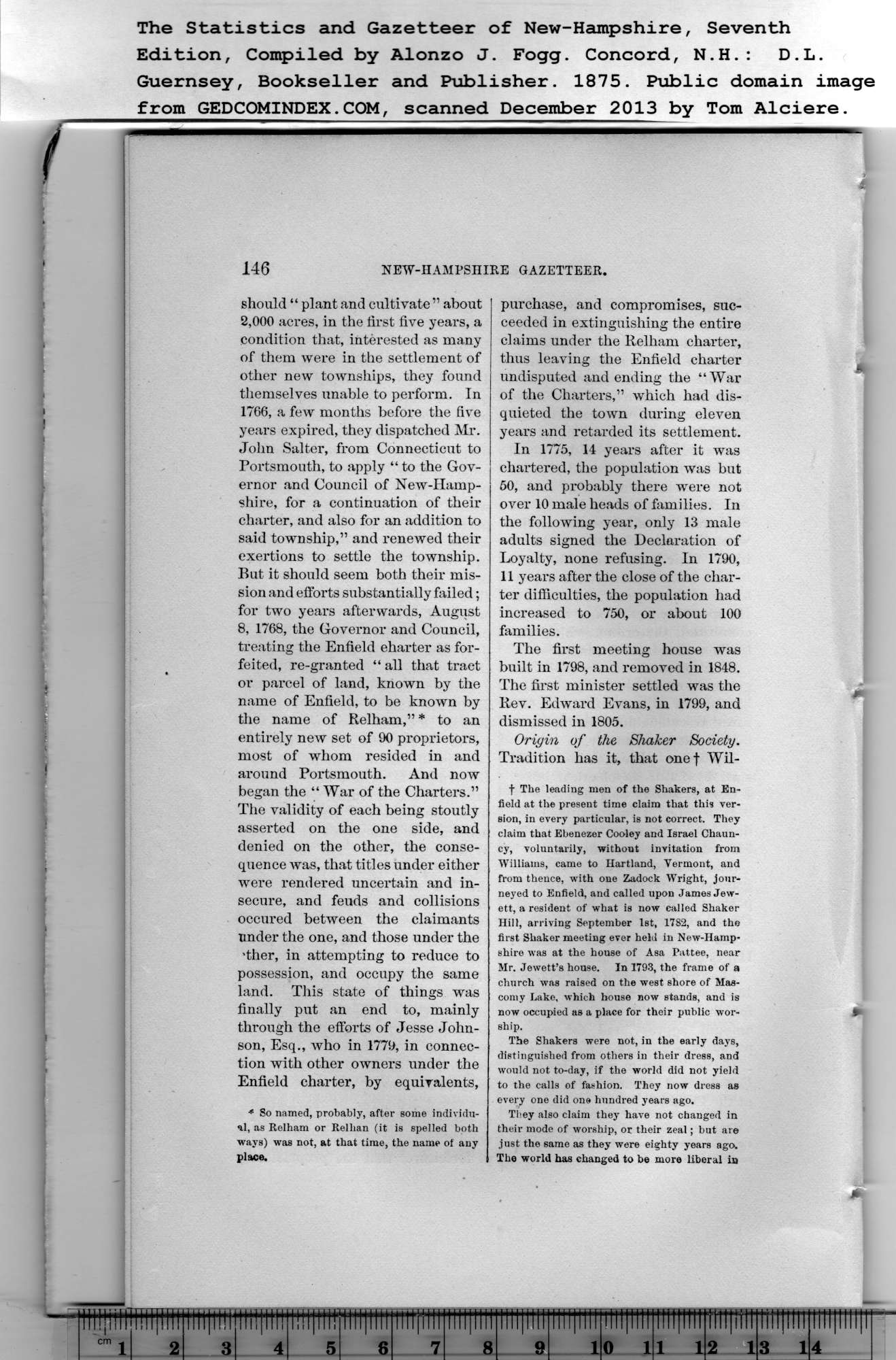|
should “ plant and cultivate ” about
2,000 acres, in the first five years, a
condition that, interested as many
of them were in the settlement of
other new townships, they found
themselves unable to perform. In
1766, a few months before the five
years expired, they dispatched Mr.
John Salter, from Connecticut to
Portsmouth, to apply “ to the Gov-
ernor and Council of New-IIamp-
shire, for a continuation of their
charter, and also for an addition to
said township,” and renewed their
exertions to settle the township.
But it should seem both their mis-
sion and efforts substantially failed;
for two years afterwards, August
8, 1768, the Governor and Council,
treating the Enfield eharter as for-
feited, re-granted “ all that tract
or parcel of land, known by the
name of Enfield, to be known by
the name of Relham,” * to an
entirely new set of 90 proprietors,
most of whom resided in and
around Portsmouth. And now
began the “War of the Charters.”
The validity of each being stoutly
asserted on the one side, and
denied on the other, the conse-
quence was, that titles under either
were rendered uncertain and in-
secure, and feuds and collisions
occured between the claimants
under the one, and those under the
'ther, in attempting to reduce to
possession, and occupy the same
land. This state of things was
finally put an end to, mainly
through the efforts of Jesse John-
son, Esq., who in 1779, in connec-
tion with other owners under the
Enfield charter, by equivalents,
•* So named, probably, after some individu-
al, as Relham or Rellian (it is spelled both
ways) was not, at that time, the name of any
place. |
purchase, and compromises, suc-
ceeded in extinguishing the entire
claims under the Relham charter,
thus leaving the Enfield charter
undisputed and ending the “War
of the Charters,” which had dis-
quieted the town during eleven
years and retarded its settlement.
In 1775, 14 years after it was
chartered, the population was but
50, and probably there were not
over 10 male heads of families. In
the following year, only 13 male
adults signed the Declaration of
Loyalty, none refusing. In 1790,
11 years after the close of the char-
ter difficulties, the population had
increased to 750, or about 100
families.
The first meeting house was
built in 1798, and removed in 1848.
The first minister settled was the
Rev. Edward Evans, in 1799, and
dismissed in 1805.
Origin of the Shaker Society.
Tradition has it, that onef Wil-
f The leading men of the Shakers, at En-
field at the present time claim that this ver-
sion, in every particular, is not correct. They
claim that Ebenezer Cooley and Israel Chaun-
cy, voluntarily, without invitation from
Williams, came to Hartland, Vermont, and
from thence, with one Zadock Wright, jour-
neyed to Enfield, and called upon James Jew-
ett, a resident of what is now called Shaker
Hill, arriving September 1st, 1782, and tho
first Shaker meeting ever held in New-Hamp-
shire was at the house of Asa Pattee, near
Mr. Jewett’s house. In 1793, the frame of a
church was raised on the west shore of Mas-
comy Lake, which house now Btands, and is
now occupied as a place for their public wor-
ship.
The Shakers were not, in the early days,
distinguished from others in their dress, and
would not to-day, if the world did not yield
to the calls of fashion. They now dress as
every one did one hundred years ago.
They also claim they have not changed in
their mode of worship, or their zeal; but are
just the same as they were eighty years ago.
The world has changed to be more liberal in |
